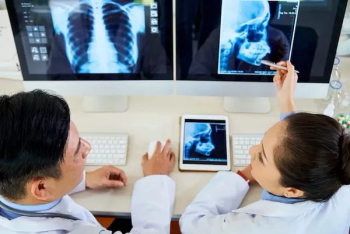
Current and Emerging Insights on AI in Breast Imaging: An Interview with Mark Traill, MD, Part 1
In the first of a three-part interview from the recent RSNA conference, Mark Traill, M.D., discusses current challenges in breast radiology and the potential of AI to help mitigate some of these issues.
Amid rising breast imaging volume and the strain of radiologist shortages, Mark Traill, MD has been using artificial intelligence (AI) for the past five years.
“AI is by my side all day. It helps me find cancers. I've got multiple examples where small lesions came across my board. AI identified them and basically presented them to me on the silver platter. I see these little lesions (and) I think maybe I would have seen (them). Maybe I wouldn't have and I'm repeatedly thankful that AI is there as a safety net to keep a lookout on the images so I don't err in missing an early malignancy,” maintained Dr. Traill, a breast radiologist affiliated with the University of Michigan Health West in Wyoming, Mich.
Dr. Traill emphasized that the mammography worklist triage capabilities with AI can significantly improve turnaround times and facilitate improved efficiencies in patient care.
(Editor’s note: For additional interviews from the RSNA conference, click
“ … Potentially you could identify a patient that needs further workup in a much shorter amount of time. So when you're able to do that at the screening level, everything else downstream will go faster too. You'll be able to get (patients) in for diagnostics quicker. They'll see the surgeon quicker. And ultimately, if they need therapy, they would be able to see the surgeon and the oncologist quicker. … With busy departments, that's a huge advantage to being able to triage those patients to the front of the queue,” noted Dr. Traill, an assistant clinical professor at the Michigan State University College of Osteopathic Medicine.
(Editor’s note: For related content, see “
For more insights from Dr. Traill, watch the video below.
Newsletter
Stay at the forefront of radiology with the Diagnostic Imaging newsletter, delivering the latest news, clinical insights, and imaging advancements for today’s radiologists.




